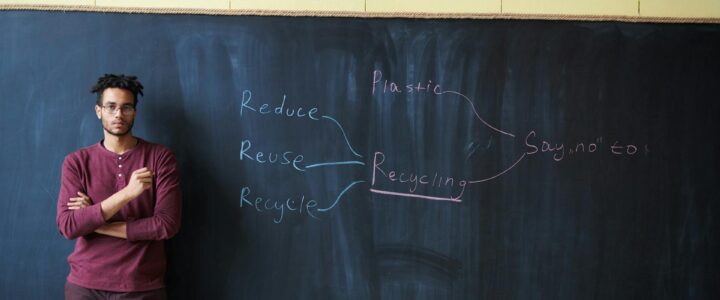
Teaching sustainability is necessary in the modern world. Learning about sustainable development, climate change, and the environment should not start at the collegiate level. There are many ways to get the youth involved in the environment and start making positive change at a young age. Creating and integrating sustainability education into curriculums from a young age and multi-module learning can be effective ways to get children involved.
Sustainability is an extremely important topic in today’s education curriculum however many students are not properly engaged or invested in the material they are learning. There are many ways to get young students more involved with sustainability and that is the goal of this article. One of the main ways sources say to engage students is with hands-on activities and practicing what they are learning instead of being lectured at. Some examples of this may include students drawing up climate action plans that they believe are important, or creating composting bins for younger students. When looking for examples of what sustainable development practices and business can look like in real life, a great example is a company called “Roc Paper Straws”, a completely woman-run business in Rochester that manufactures paper straws. With a recent visit to Nazareth University as well as other schools in the area, including high schools and middle schools, they are getting the word out about their straws and their sustainable goals while simultaneously getting young kids involved in the movement through multiple forms of learning (Roc Paper Straws, 2022). About 60% of “high achievers” use multi-module learning which means they use visual, hands on, and auditory learning in tandem to get the best possible results. It is up to the schools to have these versions of learning in place so that students have the best possible ability to learn.
Schools must be able to provide experiences as well that could lead to a real world job. Internships or volunteering at job opportunities that the students are interested in is the best way to get real world experience in a subject the school may not offer. On top of that, the real world experience they gain will enable them to more easily find a path towards a job as an adult. Overall the first step to getting any student involved is offering every type of learning opportunity possible so each student can learn effectively in their own way. A critical way to get young children involved with sustainability is experience. In Victoria, Australia sustainability is integrated into the curriculum. Researchers sat down for a pre-planned interview session and asked kids all the same questions. Their responses clearly indicated that their sustainability learning experiences played a critical role in shaping their opinions and understanding (Children and Nature Network, 2006 ). The children were able to hold conversations with each other and with other older figures about sustainability topics and express their own opinions at an age of 9. It was also found that there are four main categories that the children responded to. They are planetary sustainability, caring for the “web of life”, emerging sustainability knowledge from local places, and imagining a sustainable future. Children are eager to learn, but the material must be shifted to fit their interests.

Sustainability can and should be taught in schools. It is necessary to involve and inform the next generation about local and worldly topics that shape the future. Sustainability education cannot only be concerned with disciplines that improve our understanding of nature, we must also acquire an approach to education that strengthens engagement. While it’s important to recognize the role that sustainable development teaching would play in the educating of younger generations, we must also pertain to the fact that this type of education has yet to be created. If we want to truly implement knowledge and change in younger generations we must first prioritize the creation of a sustainable development centered education that is taken just as seriously as science, english, math, and all other common core subjects young students learn from early ages. Strategies are beginning to emerge to help educators in schools recognize that they are teaching and learning objectives that can contribute to progress made in the real world (Teaching the UN SDGs, 2021).
In conclusion, it is important to emphasize the urgent necessity of integrating sustainability education into curriculums from an early age. By incorporating interactive and multimodal learning experiences, schools can actively engage students, creating a deep connection to the environment. The evidence from various educational initiatives worldwide shows that when students are given the opportunity to explore sustainability through practical, hands-on experiences, the understanding and commitment to these issues increase. As the global community faces increasingly complex environmental challenges, educating the next generation about sustainability becomes beneficial for creating a future where people and the planet can thrive for generations to come.



